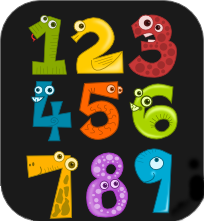Patterns with numbers
0
Overview
Using this Resource
Connecting to the Curriculum
Marking Student Responses
Working with Students
Further Resources
This task is about number patterns.

Continue the patterns by writing in the missing numbers.
Task administration:
This task can be completed with pencil and paper or online (with auto marking displayed to students).
Level:
1
Curriculum info:
Keywords:
Description of task:
Students find missing numbers to complete addition and subtraction number patterns.
Curriculum Links:
This resource can help to identify students' ability to continue number patterns based on ones, twos, fives, and tens.
Number Framework
Sequences and patterns are addressed in the Number Framework (strategies) at Stages 3 and above (see Book 9, p31 for a table of the relationship between number strategy stages and sequences and patterns).
Learning Progression Frameworks
This resource can provide evidence of learning associated with within the Mathematics Learning Progressions Frameworks.
Read more about the Learning Progressions Frameworks.Answers/responses:
| Y3 (04/2016) | |||
| a) | 10, 11, 12, 13 |
All 4 correct
At least 2 correct
|
very easy
very easy
|
| b) | 20, 30, 35, 40 |
All 4 correct At least 2 correct |
easy
easy
|
| c) | 14, 16, 20 |
All 3 correct At least 2 correct |
easy
easy
|
| d) | 10, 8, 4 |
All 3 correct At least 2 correct |
moderate
easy
|
| e) | 9, 7, 5, 3 |
All 4 correct At least 2 correct |
moderate
moderate
|
| f) | 15, 18, 21, 27 |
All 4 correct At least 2 correct |
difficult
moderate
|
Based on an online sample of 50 Y3 students.
Diagnostic and formative information:
| Common error | Likely misconception | |
| a) | 6, 7, 8, 9 |
Believes it is a repeating pattern.
|
|
b)
c)
d)
e)
f)
|
16, 26, 27, 28 (+1 not +5)
13, 14, 19 (+1 not +2)
11, 10, 5 (-1 not -2)
10, 9, 8, 7 (-1 not -2)
8, 5, 2, 0 (-3 not -2)
14, 16, 18, 26 (+2 not +3)
13, 14, 15, 25 (+1 not +3)
|
Continues pattern in the correct direction but uses an incorrect increment.*
|
|
c)
e)
|
14, 15, 20 (+2, +1, +2)
14, 15, 19 (+2, +1 + 1)
9, 6, 3, 0 (-2, -3, -3, -3)
|
Continues the pattern in the correct direction with the correct initial number, then continues with an incorrect increment.*
|
|
e)
|
13, 15, 17, 19 (adds in 2s)
|
Continues the pattern with a correct increment* but in an incorrect direction.
|
|
d)
e) |
13, 14, 7
12, 13, 14, 15 13, 14, 15, 16 |
Continues pattern in an incorrect direction with an incorrect increment.*
|
* An increment could be an increase (e.g. + 3) or a decrease (e.g. – 2).
Next steps:
Believes it is a repeating pattern
A small number of students treated the first four numbers in pattern a) as a repeating unit. While this is not technically incorrect, the focus in this resource is on continuing a sequential pattern. Often the first types of patterns students are exposed to are repeating patterns which are important in the development of a functional approach to rules and relationships.
A small number of students treated the first four numbers in pattern a) as a repeating unit. While this is not technically incorrect, the focus in this resource is on continuing a sequential pattern. Often the first types of patterns students are exposed to are repeating patterns which are important in the development of a functional approach to rules and relationships.
Students could explore growing or sequential patterns by counting in 1s, 2s, 5s, and/or 10s then move on to patterns that increase or decrease by 3.
Missing Numbers is a Level 2 resource which focuses in on one number pattern and its rule.
Incorrect increment
Encourage students to explain how they worked out what number came next in the pattern and ask them to check for consistency with both the given numbers and the numbers the students has added to the pattern.
Knowing that a general rule should be consistent for the whole pattern is a key understanding when working with patterns and rules.
The resource, Which number?, explores patterns where one number is incorrect and provides an opportunity for further discussion and exploration of rules.
Use the rule requires students to apply a rule to a pattern and similarly provides a way to discuss the importance of being consistent when applying rules.
Incorrect direction
Have students explore the number patterns with materials such as a number line or hundreds chart so they can see the direction in which the pattern goes.
Concept Map
For further information about the place of patterns in the development of algebraic thinking, refer to the Algebraic patterns concept map

